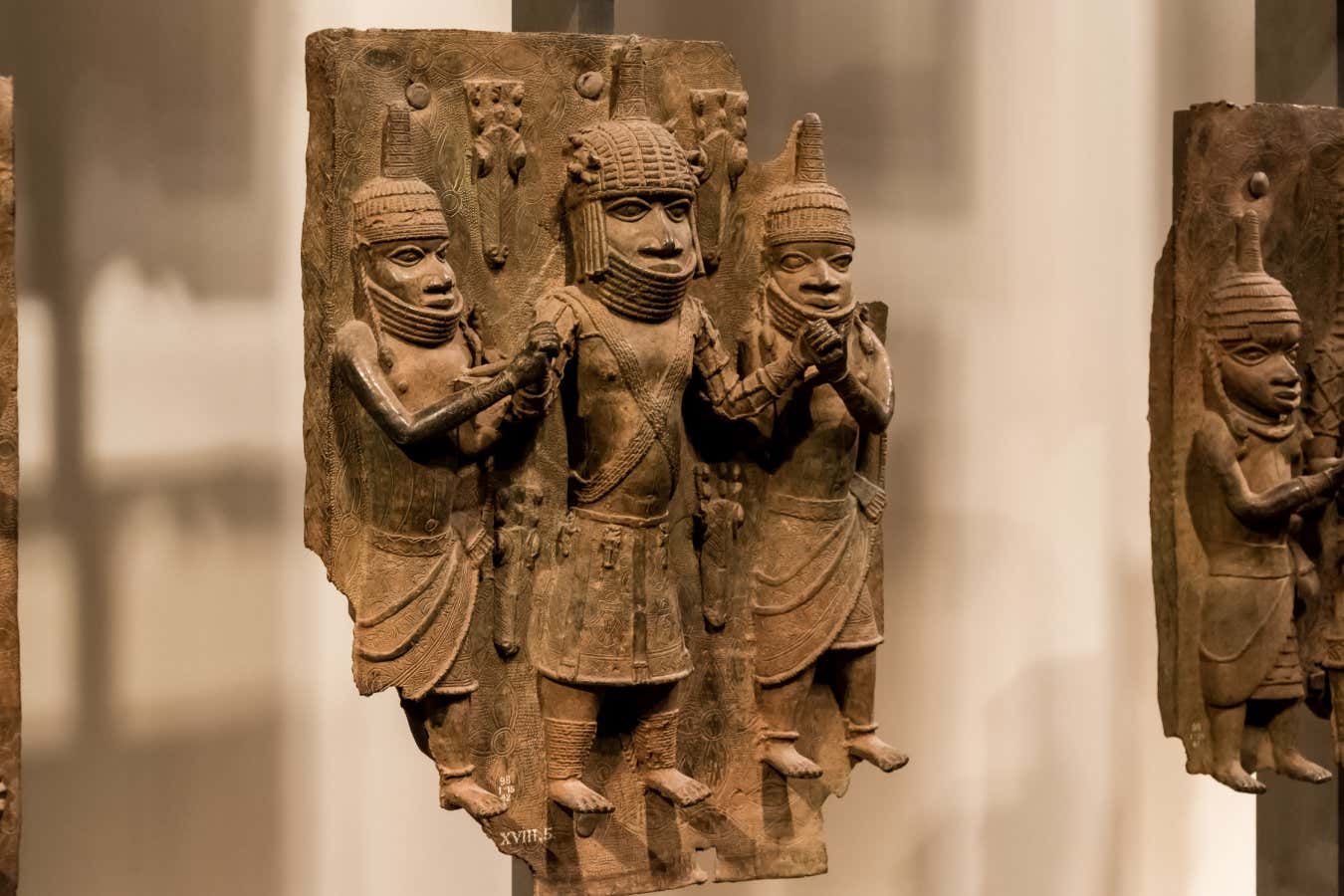A detail of the Benin Bronzes displayed at the British Museum
Shutterstock / Mltz
The world-famous Benin Bronze artworks, created between the 16th and 19th centuries by African metalsmiths, were made of brass rings manufactured in Germany’s Rhineland region. These rings, which served as currency during the transatlantic slave trade, were used by the Edo people in what is now modern-day Nigeria to create various objects including heads, plaques, and figurines by combining metal components with carved ivory or wood. Until recently, the exact source of the metals used in these artworks had remained unknown.
However, a team of researchers led by Tobias Skowronek at Germany’s Georg Agricola University of Applied Sciences conducted a chemical analysis of 67 manillas – horseshoe-shaped brass rings produced by Europeans specifically for trade in Africa – discovered in five Atlantic shipwreck sites and several land-based archaeological sources. The manillas were compared with the Benin Bronzes and the ores used by the brass industry in Germany’s Rhineland region. The analysis revealed a strong similarity between all the metals, indicating that African metalsmiths likely used manillas obtained from European traders as a primary source of material for the Benin Bronzes.
This finding is consistent with historical records, which mention contracts between German merchant families and Portuguese and Dutch traders for the production of manillas. Germany’s involvement in the Benin Bronzes has often been associated with the colonial period and the Berlin Conference of 1884-1885. However, this research sheds light on the country’s link to the Benin Bronzes prior to colonization and during the era of slavery.
Cresa Pugh, a scholar at The New School in New York, believes that this discovery could reshape the understanding of Germany’s role in the history of the Benin Bronzes. While Germany’s involvement during the colonial period has been well-studied, the connection before that time has been less explored. The findings provide a missing link between the periods of slavery and colonialism.
Thousands of Benin Bronzes were looted by a British military expedition in 1897 and subsequently distributed or sold to various European museums, including German museums. However, starting in 2022, Germany has initiated the process of returning some of the Benin Bronzes to Nigeria as part of a broader international discussion on cultural restitution and decolonization.
Topics:








